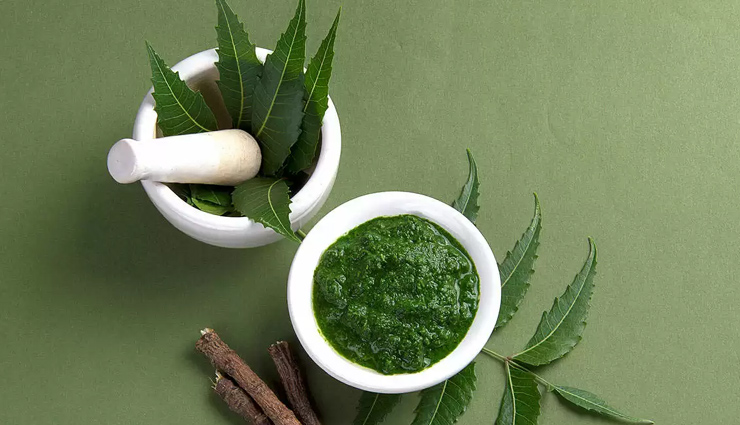In today’s fast-paced lifestyle, diabetes has emerged as one of the most common chronic diseases globally. While modern medicine offers various drugs and insulin therapies, more and more individuals are exploring alternative healing methods that go beyond just symptom management. Ayurvedic treatment for diabetes has gained widespread popularity for its natural, holistic, and sustainable approach to managing blood sugar levels and enhancing overall well-being.
At the forefront of Ayurvedic healing is Dr. Arvind Chaudhary, recognized as the best Ayurvedic doctor in Dehradun. With a deep understanding of Ayurvedic principles and decades of clinical experience, he has helped countless patients manage diabetes through personalized, natural interventions.
Understanding Diabetes from the Ayurvedic Lens
In Ayurveda, diabetes is referred to as Madhumeha, a condition falling under the broader category of Prameha—a group of metabolic disorders that involve excessive urination and imbalance in bodily tissues. Unlike conventional approaches that focus primarily on blood glucose, Ayurvedic treatment for diabetes seeks to identify and correct the root causes of the disorder.
According to Ayurvedic philosophy, Madhumeha is primarily caused by an imbalance in Kapha and Vata doshas, leading to improper functioning of Agni (digestive fire) and accumulation of Ama (toxins). This results in improper metabolism of carbohydrates and fats, thereby disrupting the normal balance of blood sugar.

Types and Symptoms of Diabetes in Ayurveda
Ayurveda categorizes diabetes into two main types:
-
Avarana (Obstructive type) – Often seen in overweight individuals where Kapha blocks Vata, leading to symptoms like heaviness, lethargy, and frequent urination.
-
Dhatukshaya (Depletive type) – Common in lean individuals with predominant Vata, leading to tissue degeneration, fatigue, and dryness.
Typical symptoms include:
-
Frequent urination
-
Excessive thirst
-
Sudden weight changes
-
Fatigue and drowsiness
-
Dry mouth and skin
-
Blurred vision
-
Slow-healing wounds
Ayurvedic treatment for diabetes involves identifying the type of diabetes and customizing treatment accordingly for effective and long-lasting relief.
Ayurvedic Treatment for Diabetes: The Core Principles
The foundation of Ayurvedic treatment for diabetes is built on a multi-layered approach that involves herbal formulations, dietary regulations, lifestyle management, and detoxification therapies. Unlike one-size-fits-all medications, Ayurveda focuses on individualized care.
1. Herbal Remedies
Ayurveda utilizes potent herbs that help regulate blood sugar, improve digestion, and rejuvenate internal organs.
-
Gudmar (Gymnema Sylvestre): Known as the “sugar destroyer,” Gudmar helps reduce sugar absorption in the intestines and stimulates insulin production.
-
Karela (Bitter Gourd): Contains plant insulin (polypeptide-P) and helps in lowering blood sugar naturally.
-
Methi (Fenugreek): High in soluble fiber, which helps in better sugar metabolism.
-
Neem: A natural blood purifier with hypoglycemic effects.
-
Vijaysar (Indian Kino Tree): Used to regenerate pancreatic cells and manage glucose levels.
-
Turmeric (Haldi): Reduces inflammation and supports insulin sensitivity.
These herbs are prescribed based on individual body constitution and disease stage. Dr. Arvind Chaudhary, known as the best Ayurvedic doctor in Dehradun, ensures that the combinations and dosages are personalized for maximum efficacy.
2. Dietary Guidelines in Ayurvedic Treatment for Diabetes
Diet is a crucial component of Ayurvedic treatment for diabetes. Ayurveda encourages a Sattvic (pure) diet that is simple, fresh, and seasonal.
Recommended foods include:
-
Whole grains like barley, millets, and brown rice
-
Bitter vegetables such as karela, methi leaves, and neem
-
Low-glycemic fruits like amla, guava, and jamun
-
Herbal teas with cinnamon, fenugreek, and ginger
Foods to avoid:
-
Refined sugar and artificial sweeteners
-
White rice, maida (refined flour), and bakery items
-
Fried and processed foods
-
Dairy products in excess
Patients under Dr. Arvind Chaudhary’s care receive personalized diet charts tailored to their constitution and dosha imbalance, ensuring that nutrition supports healing at every step.

Lifestyle Management and Dinacharya
Ayurveda promotes Dinacharya (daily routine) and Ritucharya (seasonal routine) as tools for maintaining physical and mental harmony. In Ayurvedic treatment for diabetes, adopting healthy lifestyle habits is just as important as taking herbal medicines.
Key lifestyle recommendations include:
-
Waking up early, during Brahma Muhurta (4:30–6:00 AM)
-
Performing mild to moderate exercise like walking, yoga, or pranayama
-
Avoiding afternoon naps
-
Eating meals at consistent times
-
Practicing mindfulness to manage stress and anxiety
Regular monitoring of blood sugar and maintaining a healthy sleep cycle further support the effectiveness of Ayurvedic therapies.
Panchakarma Detoxification in Diabetes Management
One of the most powerful components of Ayurvedic treatment for diabetes is Panchakarma, a series of detoxifying therapies aimed at eliminating accumulated toxins (Ama) and balancing the doshas.
Effective Panchakarma procedures for diabetic patients include:
-
Vamana (Therapeutic Emesis): Useful in Kapha-dominant diabetes to expel toxins from the upper body.
-
Virechana (Purgation): Cleanses the liver and intestines to enhance Pitta function.
-
Basti (Medicated Enema): Especially effective for Vata-related conditions, this therapy nourishes and rejuvenates.
-
Abhyanga (Oil Massage) and Swedana (Herbal Steam): Improve circulation and stimulate metabolism.
At his clinic in Dehradun, Dr. Arvind Chaudhary carefully assesses whether Panchakarma is suitable for the patient’s current condition and supervises each step to ensure safety and effectiveness.
Role of Yoga and Pranayama
Physical activity is essential in managing diabetes. Ayurveda encourages incorporating Yoga and Pranayama as part of daily routine to regulate metabolism, strengthen the pancreas, and relieve stress.
Recommended Yoga poses for diabetes:
-
Vajrasana – Enhances digestion
-
Paschimottanasana – Stimulates internal organs
-
Dhanurasana – Improves pancreatic function
-
Ardha Matsyendrasana – Aids in detoxification
Pranayama techniques like:
-
Anulom-Vilom – Balances the nervous system
-
Bhastrika – Energizes and oxygenates cells
-
Bhramari – Calms the mind and supports hormone balance
Together, Yoga and breathing exercises enhance the effects of Ayurvedic treatment for diabetes by fostering harmony between body and mind.
Real Patient Transformations
Many patients who were once dependent on heavy medications and insulin injections have seen significant improvement through Ayurvedic treatment for diabetes under Dr. Arvind Chaudhary’s care.
Success stories include:
-
Patients reducing or eliminating their dependence on allopathic medication
-
Stabilization of HbA1c levels
-
Enhanced energy, digestion, and mental clarity
-
Weight loss and improved cardiovascular health
These outcomes are possible because Ayurveda treats the person, not just the disease. Through a combination of herbal support, dietary corrections, detox procedures, and lifestyle changes, Ayurvedic treatment for diabetes offers a sustainable and natural pathway to healing.

Expert Care from the Best Ayurvedic Doctor in Dehradun
If you’re looking to take a holistic and natural approach to managing diabetes, Dr. Arvind Chaudhary is here to help. As the best Ayurvedic doctor in Dehradun, he offers personalized treatment plans that blend traditional knowledge with modern diagnostic techniques. Whether you’re at risk, newly diagnosed, or have been managing diabetes for years, Ayurvedic care under his guidance can help transform your health from within.


